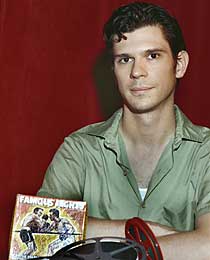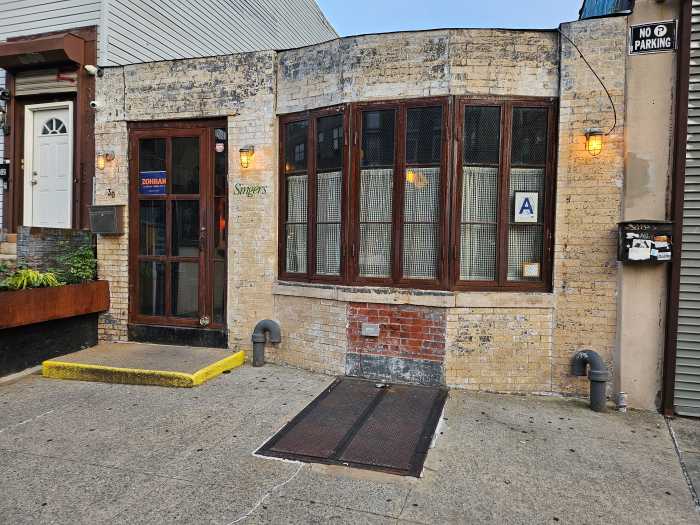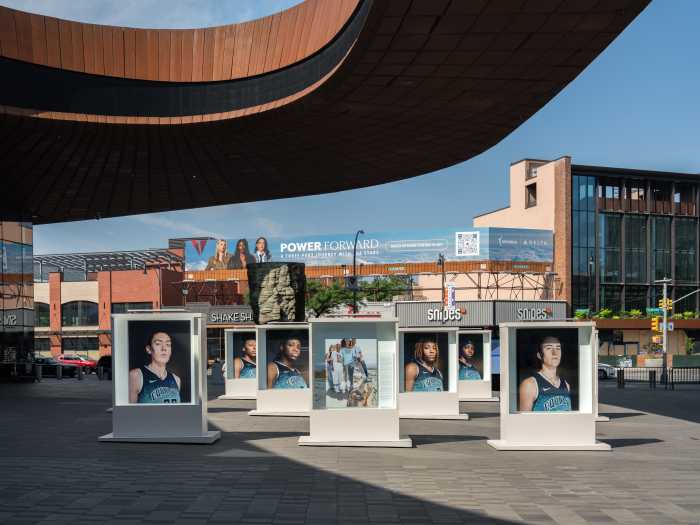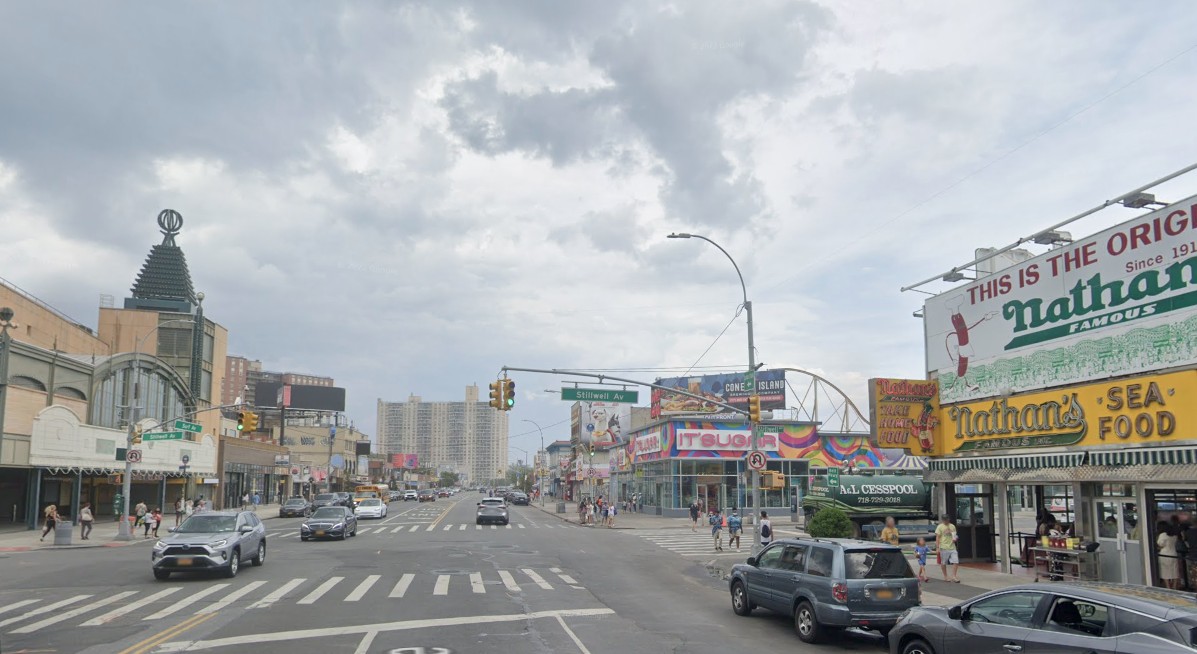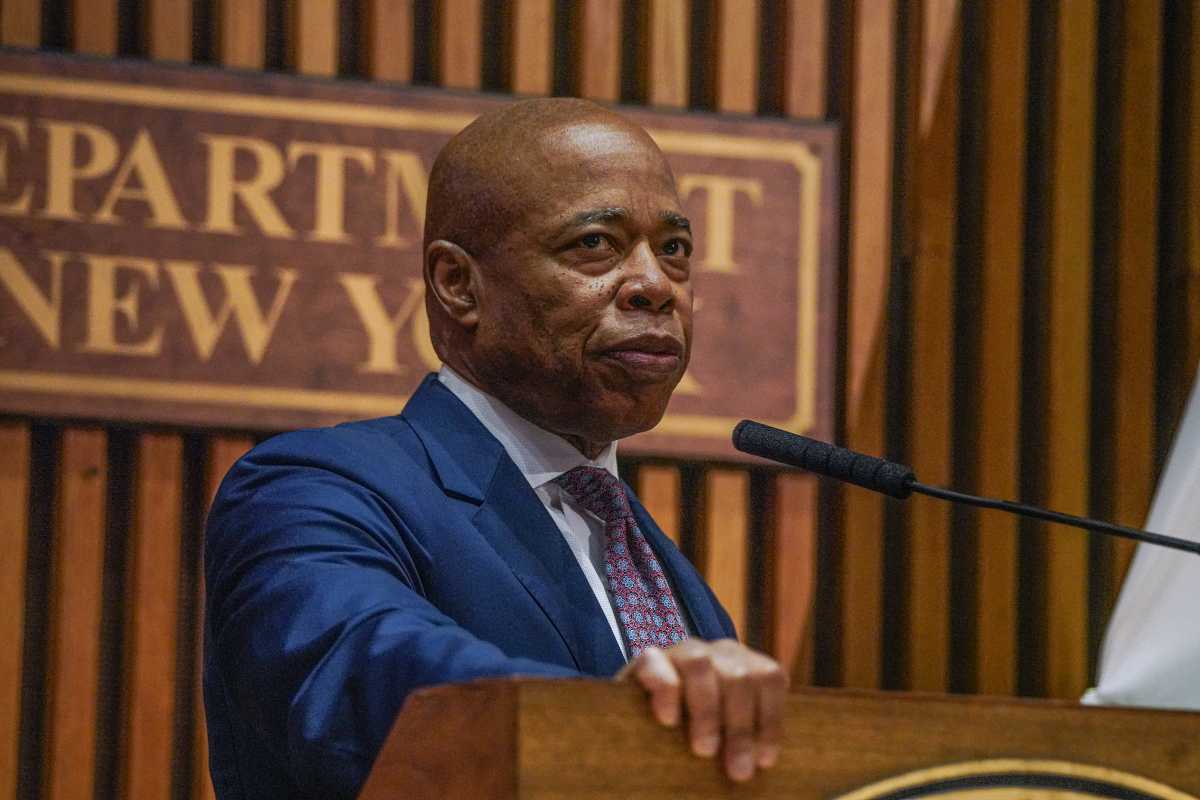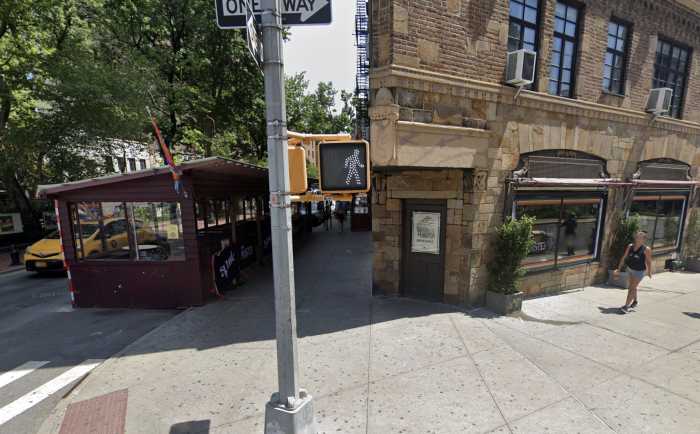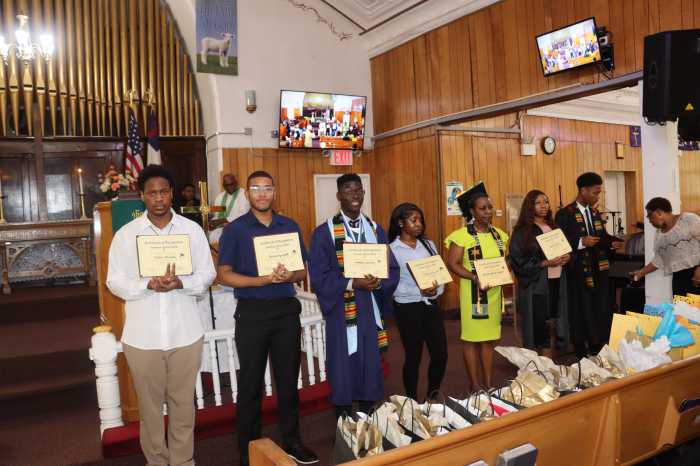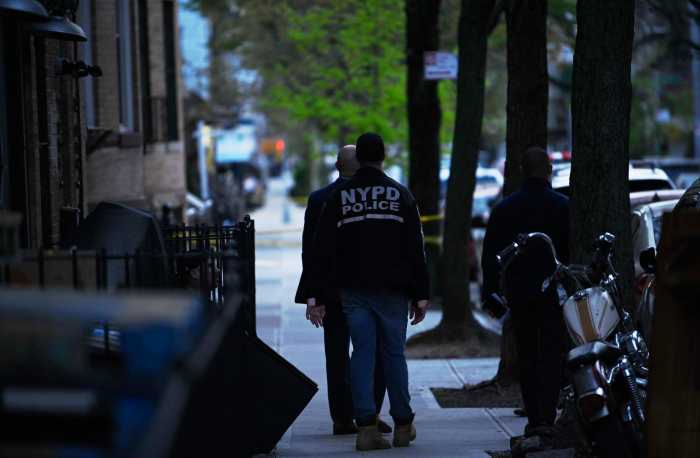The underground film movement that’s been
bubbling below the New York City surface has finally snaked its
way through the tunnels of the F train and emerged in Park Slope.
Flicker, the regional small format film festival, has taken up
root at Barbes, a dark, cozy bar on Ninth Street and Sixth Avenue.
Flicker joins an already budding underground film movement, including
the Brooklyn International Film Festival, Brooklyn Underground
Film Festival and the Rooftop Films series in Williamsburg. But
unlike Brooklyn International, which screens larger format, mainstream
films, or Brooklyn Underground, which privileges outcast or experimental
films that are screened once a year in DUMBO, Flicker screens
films on a regular basis.
And Flicker is dedicated to maintaining the presence and future
of Super 8 movies … all Super 8 movies. The kinds of films
shown change from screening to screening, and range from high
art to home movies. The films are culled from thrift stores,
garage sales and garbage piles, as well as from filmmakers.
David Teague, organizer of Flicker’s New York chapter, says Flicker
"provides a forum for people shooting small-gauge films,"
since most film festivals no longer screen Super 8 and 16-mm
films. The Manhattan chapter, which meets bimonthly at The Knitting
Factory, mostly screens pieces by local filmmakers, while the
Brooklyn offshoot promises a more intimate and offbeat oeuvre
at Barbes.
A live band improvises to the films at each Brooklyn screening,
providing an impromptu soundtrack, and the band changes for each
show.
"I usually meet the band and hear the music for the first
time the night of the show, which is also a fun surprise and
adds to the improvisational and spontaneous nature of the shows,"
says Teague.
At the last screening, in early July, about 30 people snuggled
into the back room of Barbes to hear local Slope band Felnik
(Barbes owner Olivier Conan, playing a Venezuelan Cuatro, sat
in with the band) accompany Super 8 boxing movies.
And these weren’t just any fights; one film displayed a fight
between Jake LaMotta and Sugar Ray Robinson. Another showed the
historic 1936 spar between Joe Louis and Max Schmeling: "the
greatest fight of the century" according to the film, and
then their rematch two years later.
Boxing movies work especially well with live music, says Conan,
"since boxing is already cinema and dance."
The films were gorgeous: grainy and slightly unfocused and acidic,
like moving etchings. Teague controls the frame-rate – the speed
at which the films are projected – but these movies are not optically
printed or digitally remastered.
"Super 8 offers up a particular kind of look thanks to the
grain," says Teague. "Small format is beautiful and
often otherworldly, even when the subject matter is traditional
or banal."
But the subject matter is hardly banal.
Upcoming shows will include old cartoons, travelogue films, and
any number of movies from Teague’s personal collection, which
includes home movies, educational films, stag and porn movies
and silent films.
The next Flicker screening at Barbes is on Aug. 28, at 9 pm,
and will feature silent-era comedies including Buster Keaton’s
"Electric House" and "My Wife’s Relations,"
Charlie Chaplin’s "The Pawnshop" and "The Cure,"
Laurel and Hardy’s "Their Purple Moment" and "You’re
Darn Tootin’" and more, with accompaniment by pianist Joel
Forrester.
"It’s a rare treat to see these shorts that were a huge
part of home entertainment before the introduction of the VCR,"
Teague says. "It’s a perspective on popular culture that
is unique and of a format that is dead now on the commercial
front."
But Super 8 is not dead to Teague, and he’s no Luddite. Instead
of eschewing the glossy, instant gratification of digital video
(DV) in favor of good old-fashioned film, Teague extols its virtues.
Now you can shoot on Super 8 for the look, and edit on DV for
the convenience and creative control.
"The more formats the better," he says.
Many festivals now rely on DV or VHS even for screenings, or,
for the big-league festivals, require 35-mm prints – the kind
you see in movie theaters. But Flicker opens the door for small-budget
moviemakers who want to shoot on film, and ensures that the future
of small-format cinema lives on.
Flicker nights will continue their dedication to Super 8 and
the occasional foray into 16 mm, with different bands providing
the live and unrehearsed soundtrack. Flicker has chapters springing
up all over the country and even on other continents, from Athens
to Austin, Bordeaux to New Orleans, Chapel Hill, Cleveland, Frankfurt
and Prague.
DV hasn’t made a dent in filmmakers’ love of Super 8, and studio
movies can’t kill the movement, either.
Says Teague, "I like [avant-garde filmmaker] Jack Smith’s
sentiment that 35 mm should be used by underground filmmakers
and all Hollywood films should be shot on Super 8."
"Flicker" film nights take
place monthly at Barbes (376 Ninth St. at Sixth Avenue in Park
Slope). The next event, showcasing silent-era comedies, is Aug.
28, at 9 pm. A donation of $5 is suggested. For more information,
call (718) 965-9177 or visit the Web site at www.barbesbrooklyn.com.
For more information about the Flicker Film Festival, log onto
www.flickernyc.com.


